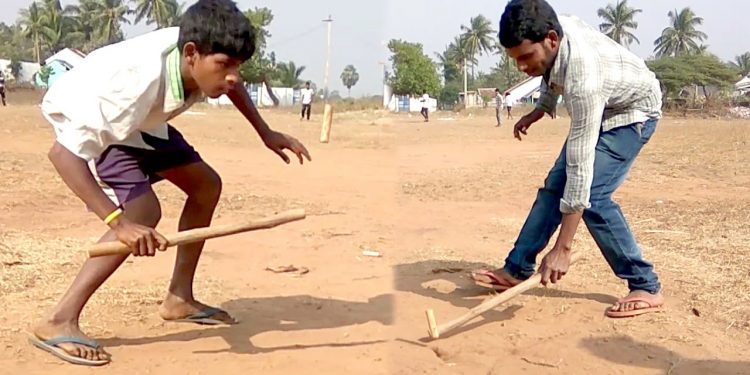India is a country of rich traditions and needless to say that games have found a special place in our culture. Our scriptures, history and mythology are testimony to the game of dice, chariot racing, sword fighting, archery and other games. But the culture and time have undergone drastic changes, so have our sports. Gone are those days, when kids used to hurry back home from school so that they could go out and play their favorite games like Puchi, Kith-Kith, Guti, Gili-Danda and Bagha-Chheli. Children, in this digital age, mostly prefer electronic gadgets over traditional games. Spending time at the game stations of shopping malls is the new trend. With the exception of Kabadi and Kho Kho, a plethora of traditional folk games are gradually fading into oblivion which today’s kids will perhaps never connect to. Those games are almost on the verge of disappearance. Sunday POST takes a trip down the memory lane to shed lights on a few such forgotten games.
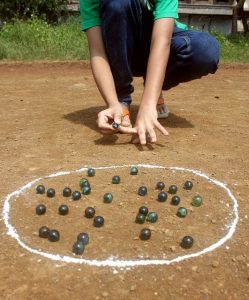
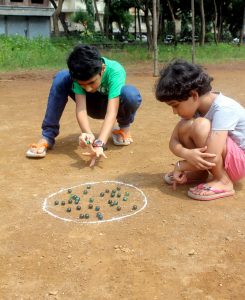
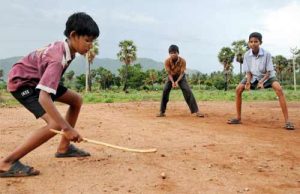

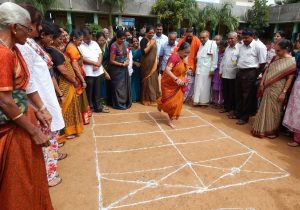

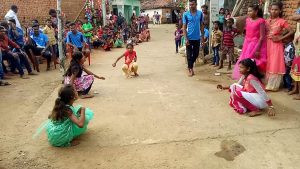

Puchi
Puchi was one of the favourite games for the girls in villages. However, it is gradually vanishing due to the advent of television and other forms of entertainment. In villages, ‘Puchi’ competitions were held during festivals like Raja and Kumara Purnima. Two types of Puchi -Thia Puchi and Basa puchi – are still played in some parts of Odisha. Thia Puchi is played in a squatting position where one’s weight is shifted and balanced from one leg to another in quick successions. In Basa Puchi, girls sit in a circle and dance throwing one leg and one hand forward alternatively. The process creates rhythms in the whole body. This is not just an outdoor game, it is a sort of exercise that strengthens the thigh, waist and abdomen of a girl.
Bagha-Chheli
It is a board game that requires concentration, analysis, anticipation and planning. So, it tests the intelligence of a player. People used to draw permanent playing boards on the cemented floor of their verandahs. All they do is to pick up four stones of bigger sizes and 20 small ones. In this game, the opponents’ strengths are accessed by employing both defensive and offensive tactics. It can be played by two people or two teams having two players in each team. According to the rules, the tigers have to kill the goats, while the goats have to encircle their predators. In those days, teachers even taught Bagha-Chheli games to students to make them understand mathematics. Students who were good at the game used to understand complex concepts like fractions, integers, even probability, and arithmetic quickly. Players with tigers need to jump over a goat if the next vertex is vacant. Each time a tiger does this, the tiger eats the goat and the piece is removed from the board. The goats can render a tiger piece useless by cornering it or not provide it space to move.
Bati or Marble game
Once celebrated as a street game, Bati was always the favorite of village lads. The game is quite exciting but has lost its importance with time. Batis or Gotis are the balls made of glass in various colours with a diameter of 1/2 inch. They come in tiny and bigger sizes too. The game can be played in various ways. There used to be different versions ranging from easy to more complicated ones. Basically the players had to hit the target Goti using their own marbles. The winner takes all gotis of the rest of the players.
Kith-Kith
It is a very funny hopping game played by girls in many rural villages. This game requires physical agility. It can be played in streets, indoor or outdoor. Generally a chalk or a small brick piece is used to draw blocks on the ground. It contains eight blocks. Each player uses a marker such as a shell or stone. A player has to stand behind the starting line and toss his marker in the first block. She has to hop over the first block to the second one and then continue hopping to the eighth block, turn around, hop back to the second block, pause and pick up the marker, hop in the first block and set out. Then she has to toss the marker in the second block. This goes on until the player reaches the eighth block and completes the lap successfully. In this game, all hopping is done on one foot, unless there are two lateral blocks, where the player can land her both feet.
Gili-Danda
Gilli Danda has quite a few resemblances to the game of cricket, but sans a ball. It is played with two wooden sticks, a smaller one called the Gilli, of about three inches long and the longer one, a Danda which is about two feet long. The Gilli is tapered at both ends to get a good grip for striking it. The greatest challenge and fantasy lies in how well and how far one can strike the spinning gilli in air. The gilli is positioned through a small oval-shaped hole at the center of a circle which is about four feet in diameter, on the ground. The player hits the gilli with the danda and flips it into the air, hitting it as hard as he can. After that the player has to run and touch an agreed point outside the circle before the gilli is regained by the opponent.
Some people who have grown up playing these games tell Sunday POST on what could be the reasons behind their near-extinction.
Urmila Parida, a school teacher says “I was lucky to play these games which were mostly played on the streets. These days, there is hardly any vacant space left for the children to play outdoor games. Besides, children do not show much interest in learning these ‘old-fashioned’ games. Instead, they now prefer to play games on computers and smartphones. But parents should encourage their children to play these games as they immensely help in physical and mental growth of their wards.”
These games also increase the reasoning power of students. So, there is a need to preserve the traditional games, adds Parida who used to organise Puchi competitions in her school before the spread of coronavirus.
Smruti Rekha Das Bhanja, of Khurda is of the opinion that children these days hardly get time to play outdoor games between their class work and homework. The covid situation has only made the matter worse, she says, adding that many kids don’t take interest in playing such games.
Smruti blames the parents for the lack of interest of their children in traditional activities.
Another school teacher Lopamudra Swain, says, “These games had their origin in rural areas. The players used to sing colloquial songs to make them even livelier. But unfortunately, these days rarely do we find youths playing the games. Modern forms of entertainment like TV, movies, computers and various western games have replaced the traditional ones.”
Trilochan Dash, a senior government employee from Bhubaneswar, says, “I have grownup playing these traditional games. We were a few friends, who gathered at a play ground outside our village where we played games like Gilli-danda, Kabaddi and Vish-amrit. I passed on my gaming skill to my children and I am happy they have grown up playing those games. But today, I don’t see too many children playing outdoor games except cricket. I’m worried that many parents these days prefer structured activities for their kids. Children need to play with children of different ages to develop their personality which they unfortunately are deprived of.”
Rashmi Rekha Das, OP

